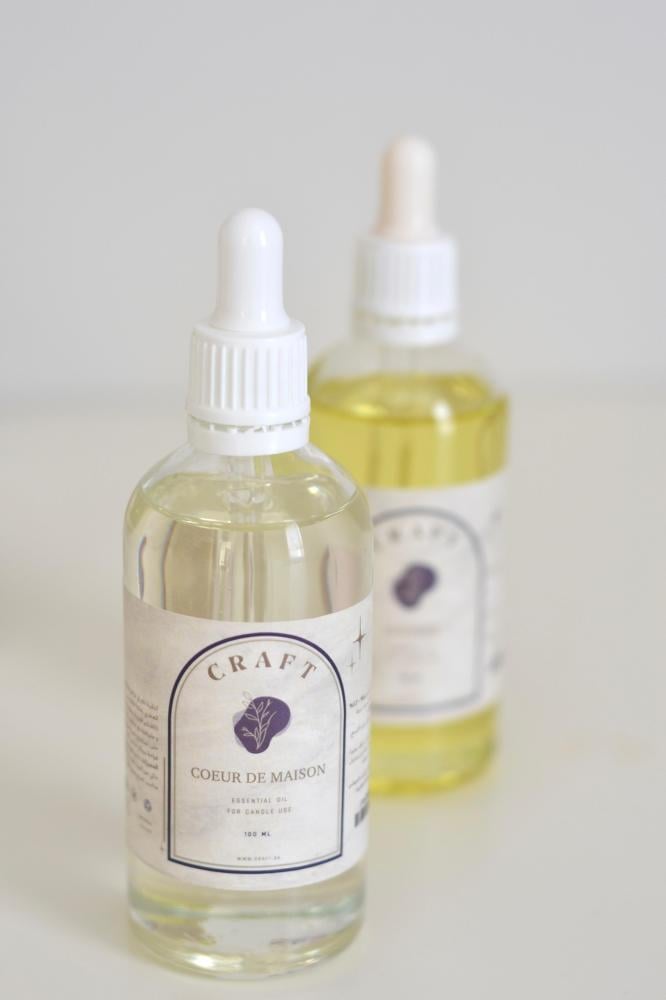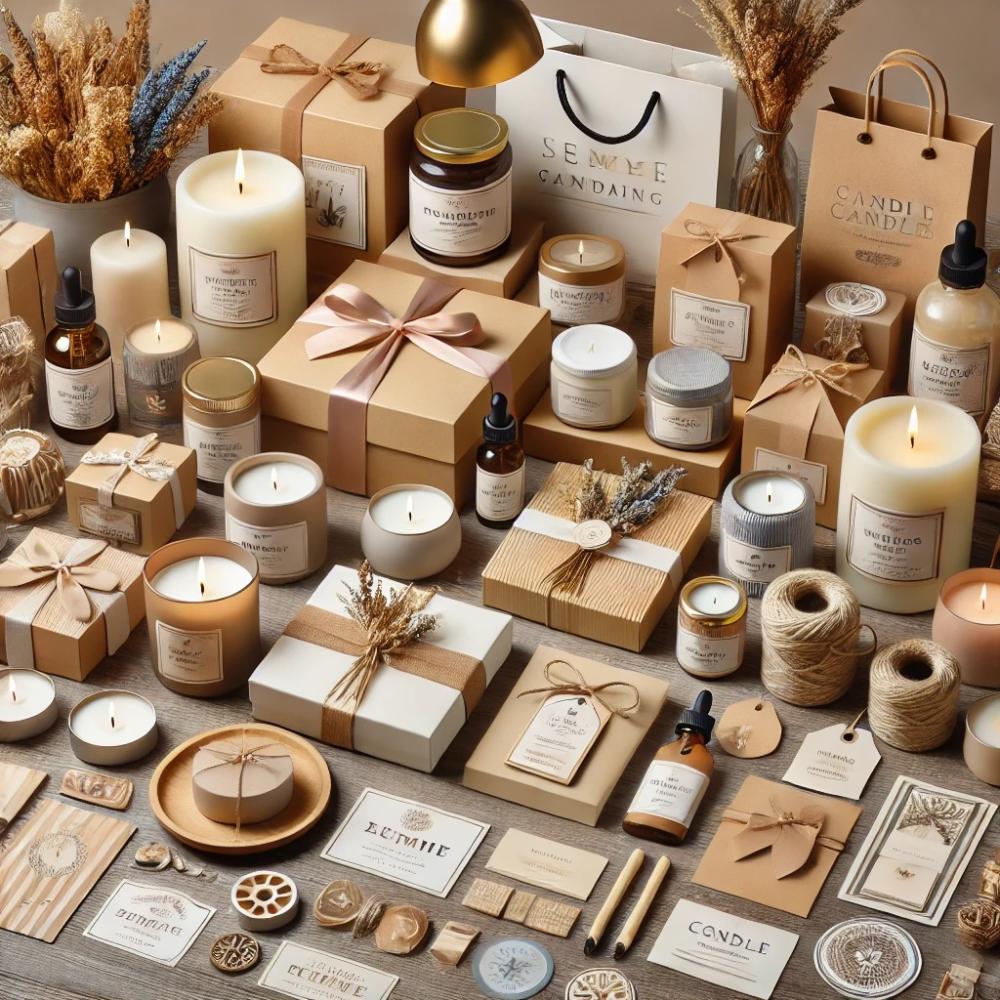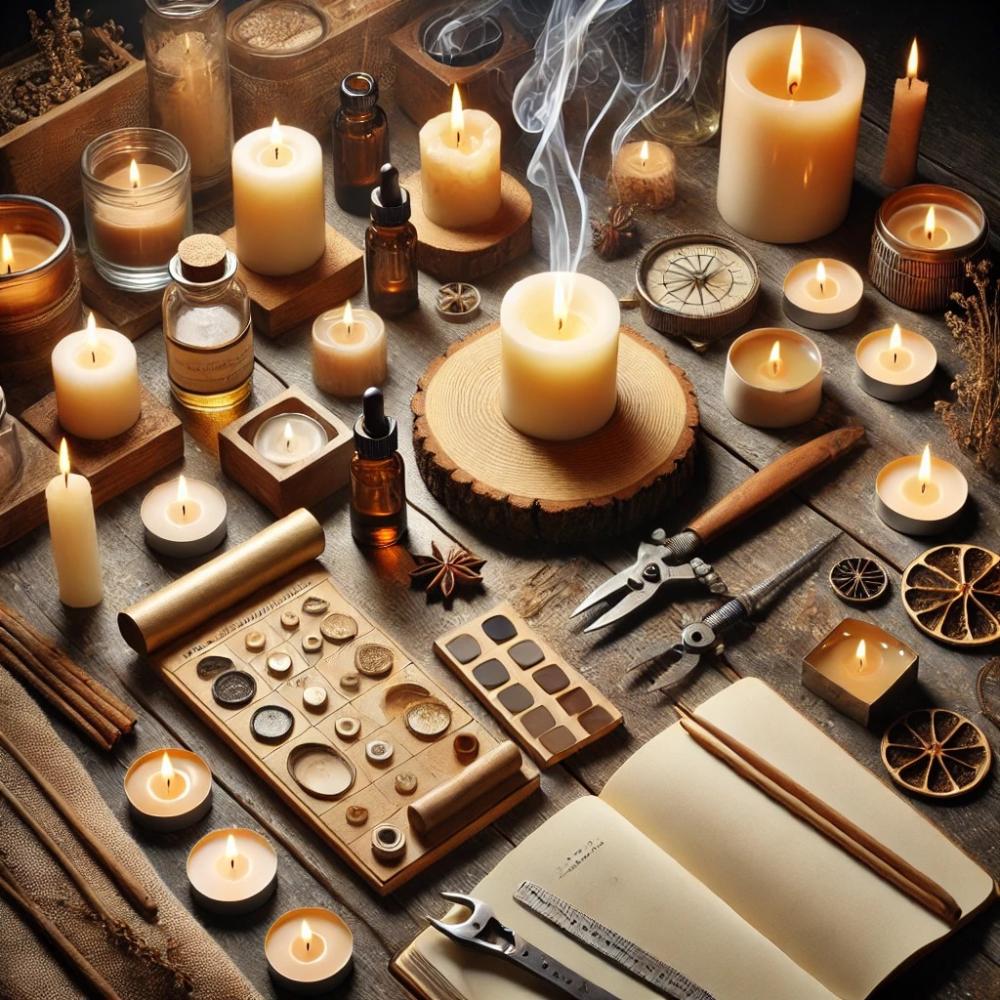Adding essential oils to candles enhances their value and gives them a unique fragrance, creating a wonderful sensory experience when lit. However, to use essential oils correctly in candle making, there are a number of steps and guidelines that must be followed to ensure the fragrance is evenly distributed throughout the candle and to achieve a clean and long-lasting burn.
1. Choosing the right essential oils
A. Quality of essential oils
When choosing essential oils for candle making, focus on quality. Natural essential oils extracted from plants such as lavender, rose, vanilla, and jasmine are the best choice because they provide pure, natural, and long-lasting fragrances.
- Tips for choosing :
- Make sure you use essential oils specifically designed for candle making. Some essential oils may not be suitable for burning and could lead to unsatisfactory results such as a weak fragrance or discoloration of the candle.
- The sensitivity of essential oils must be taken into account, as some oils may cause respiratory problems when burned if they are not suitable for candle making.
b. The balance between fragrance and wax
When adding essential oils, a balance must be maintained between the wax content and the amount of essential oil added. Adding too much oil can lead to burning problems or even oil leakage from the candle.
2. Percentage of essential oils in wax
A. The ideal amount of essential oil
Determining the correct ratio for adding essential oil is crucial. The ideal ratio is usually between 6% and 10% of the wax's weight. For example, if you're using 500 grams of wax, you could add approximately 30-50 grams of essential oil.
b. Do not add more oil
Adding too much essential oil can cause problems with the candle's burning, such as gaps forming or black smoke. If the scent is too light, it's best to add a little oil gradually until you achieve the desired aroma.
3. Timing of adding essential oil
a. Wax temperature
One of the most important factors affecting the successful addition of essential oil is the timing of its addition. The wax temperature should be around 70-75°C when the oil is added. At higher temperatures, the essential oil may evaporate too quickly, resulting in a significant loss of fragrance.
b. Stirring the wax
After adding the oil, gently stir the wax for 2-3 minutes to ensure the fragrance is evenly distributed. Insufficient stirring may cause the fragrance oil to concentrate in one part of the candle while not affecting other areas.
4. Candle test
A. Cold Odor Test
Before lighting the candle, be sure to test the "cold scent"—that is, smell the fragrance when the candle is cool. If the scent is weak, you may need to adjust the amount of essential oil.
b. Combustion test
After the candle has cooled, light it and observe its performance. If the fragrance is strong when burning and there is no smoke or flame problems, this means that the ideal ratio of essential oil has been used correctly.
5. Common essential oils for candle making
A. Lavender : Its calming scent helps with relaxation and is ideal for candles used in quiet places such as bedrooms.
B. Vanilla : A warm and sweet scent that gives a feeling of comfort and warmth in the home.
C. Roses : Adding a romantic and elegant touch, they make candles perfect for special occasions.
Dr. Mint : It gives a feeling of freshness and can be used in candles placed in open spaces such as the bathroom or kitchen.
6. Additional tips
A. Blending essential oils
You can also experiment with blending more than one essential oil to create unique and distinctive scents. For example, you can mix lavender oil with vanilla oil for a relaxing and warm fragrance.
b. Choosing a suitable fuse
If you're using heavy fragrance oils like oud or musk, be sure to choose a strong wick suitable for the candle. The right wick ensures even burning and promotes good fragrance diffusion.
Conclusion
By using essential oils correctly, you can create unique scented candles that fill your home with an inviting fragrance and create a special atmosphere. Be sure to choose high-quality oils and add them at the right time and in the correct proportions to ensure the best results.




